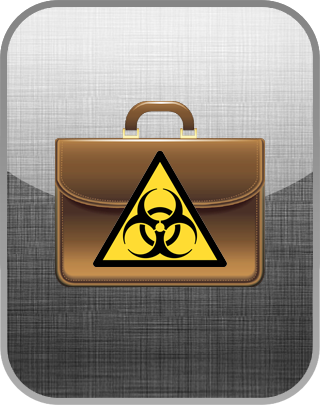Academically reviewed by Dr. Matthew Arthur-Gray, Ed.D.
3 Minute Toxic Workplace Test
Based on the standards of Mental Health America (MHA)
Instructions: Below is a list of conditions that relate to experiences common among people employed at toxic workplaces. To determine whether your workplace is toxic or wholesome, please read each question carefully and indicate whether it applies to you or not.
Your privacy is protected. All results are anonymous.
Question 1 of 10
My company has unrealistic expectations about my workload.
| Disagree | Agree |
NEXT
The IDRlabs 3 Minute Toxic Workplace Test (IDR-3MTWT) was developed by IDRlabs. The IDR-3MTWT is informed by the “Mind the Workplace” survey on workplace mental health, conducted and published by Mental Health America (MHA). The IDR-3MTWT is not associated with any specific researchers in the field of organizational psychology or any affiliated research institutions.
In 2015, Mental Health America (MHA) conducted an online survey asking over 17,000 U.S. respondents to what extent they were satisfied with their workplace. Among other things, this survey revealed that nearly half of respondents felt some people in their workplace did not receive proper recognition for their work. Majorities reported at least some degree of workplace hostility, negative impact on personal relationships, or difficulty concentrating at work because of the workplace environment itself. Finally, average workplace satisfaction differed greatly from industry to industry.
While actual workplace satisfaction may be higher in a truly randomly selected working population, it is well-established that a toxic workplace can result in mental health problems such as anxiety, stress, and even depression, depending on the severity of workplace toxicity. Since unhappy workers are also less productive and more likely to quit their jobs, workplace toxicity is a serious issue for employers as well.
The present test was developed with this information in mind, and will assess how toxic your workplace is. For the purposes of the test, we define a “toxic workplace” as a workplace that negatively affects mental health in employees as a result of unsupportive supervisors, favoritism, unrealistic workload expectations, and hostility between colleagues. Furthermore, we consider a “healthy workplace” to be the opposite of a toxic one. The items in this test were based on those used by the “Mind the Workplace” survey by MHA. Keep in mind that this test is intended for educational purposes only. IDRlabs and the IDRlabs 3 Minute Workplace Toxicity Test are independent from the above researchers, organizations, or their affiliated institutions.
Online tests and quizzes such as this one are merely a cursory look into the relevant concept and cannot provide accurate assessments of how toxic your workplace actually is. More comprehensive assessments would require investigation by one or more organizational psychology professionals, and only a mental health professional can make any definitive diagnoses or assessments.
As the publishers of this free online 3 Minute Toxic Workplace Test, which lets you screen your workplace for signs and symptoms of workplace toxicity, we have taken great care to make the test as reliable and valid as possible by subjecting this test to statistical controls and validation. However, free online quizzes such as the present 3 Minute Toxic Workplace Quiz do not provide official, professional assessments or recommendations of any kind; this test is provided wholly “as-is.” For more information on any of our online tests and quizzes, please consult our Terms of Service.
References
- Mental Health America. (2017): “Mind the Workplace”

